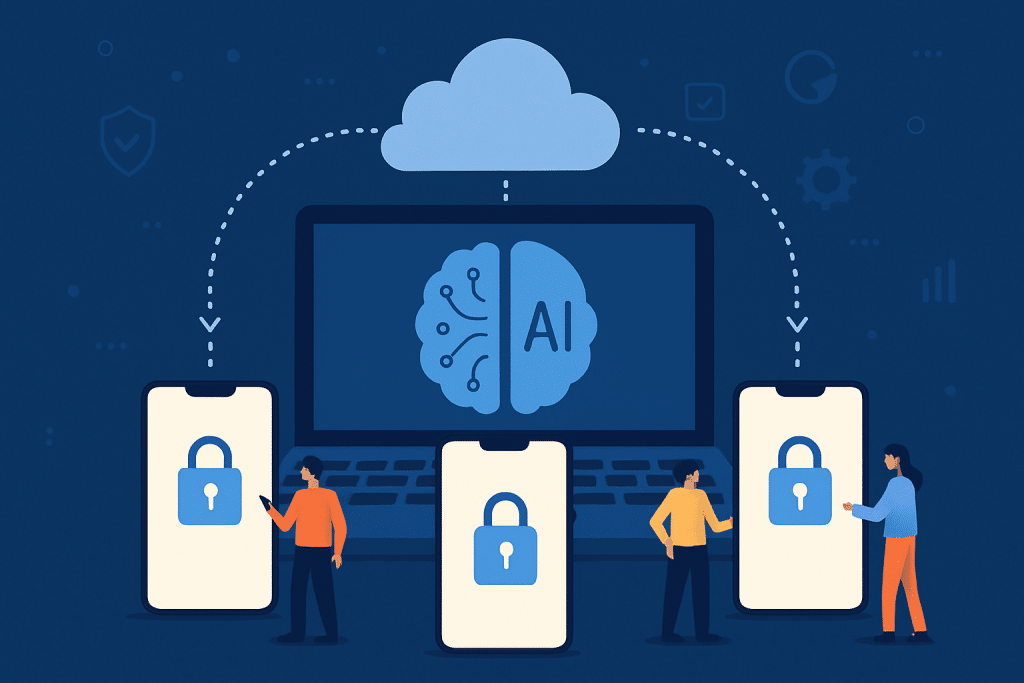A few years ago, Google faced a problem. Its Gboard keyboard app wanted to suggest smarter next words. The more data the model had, the better it could predict. But there was a catch: sending billions of private keystrokes to Google servers was never going to fly with users or regulators.
So Google tried something new. Instead of pulling data into the cloud, it pushed the model out to the devices. Training happened locally on each phone, and only aggregated updates — not raw data — were sent back. This approach became known as federated learning.
The Turning Point
That experiment with Gboard was more than just a product tweak. It kicked off a wave of interest in how AI could learn while keeping personal data private. Other companies watched closely. Privacy was becoming a headline issue, and regulators in Europe and the US were raising the stakes.
As Igor Izraylevych, CEO of S-PRO, puts it: “Gboard showed the industry that you don’t always need to choose between smarter AI and user privacy. Federated learning is messy, but it opened a path no one had seriously walked before.”
How Federated Learning Works
At a technical level, the idea is simple — though execution is anything but.
- Local training: Each device downloads the current global model. Training happens locally, using that user’s data.
- Model updates: The device sends back only weight updates or gradients, never the raw data.
- Aggregation: A central server collects updates from thousands of devices and averages them to improve the global model.
- Repeat: The updated global model is redistributed, and the cycle continues.
This allows the model to improve while sensitive data stays on the phone. But the approach also raises tough questions: how to handle uneven data quality, unbalanced participation, and the risk of malicious updates.
Industry Reactions
After Google’s Gboard, others followed. Apple explored on-device personalization for Siri. Healthcare apps started testing federated setups to train diagnostic models without sending patient data across borders. Messaging apps began experimenting with federated spam detection.
At the same time, mobile app development companies realized that federated learning could be a selling point. In markets where privacy regulations are strict — finance, healthcare, education — being able to say “we don’t export your data” became a competitive edge.
Challenges in the Real World
Federated learning sounds elegant. In practice, it’s full of landmines:
- Performance costs. Phones are not data centers. Local training drains battery and heats devices.
- Communication overhead. Pushing updates across millions of devices eats bandwidth.
- Data imbalance. Some users type constantly, others barely touch their phones. The model must learn from skewed datasets.
- Security risks. A malicious actor could poison updates, trying to inject bias into the global model.
- Debugging and monitoring. Unlike cloud training, developers can’t just open logs to inspect what went wrong.
Igor notes: “Federated learning is a privacy win, but an engineering headache. You’re running thousands of tiny experiments in the wild, and somehow they need to come back together into a single model that still works.”
The Bigger Picture
The story of federated learning isn’t only about technology. It reflects a shift in how AI is perceived. Instead of sucking data into centralized servers, the industry is experimenting with ways to keep intelligence closer to the user.
This trend aligns with new privacy laws, rising user expectations, and even geopolitics around data sovereignty. As federated learning matures, it could become a default approach for apps that handle personal or regulated data.
For startups looking to hire AI developer teams, this means federated learning is no longer a research paper concept. It’s a design choice that could define whether your app passes compliance audits or not.
Closing
The Gboard experiment showed what’s possible when innovation meets constraint. Federated learning isn’t a silver bullet — it’s messy, costly, and technically demanding. But it set the stage for a future where mobile AI doesn’t have to compromise on privacy.
As Igor sums it up: “The lesson from federated learning is clear: AI doesn’t have to know everything about you to help you. Sometimes, the smartest systems are the ones that learn quietly, in your pocket.”


